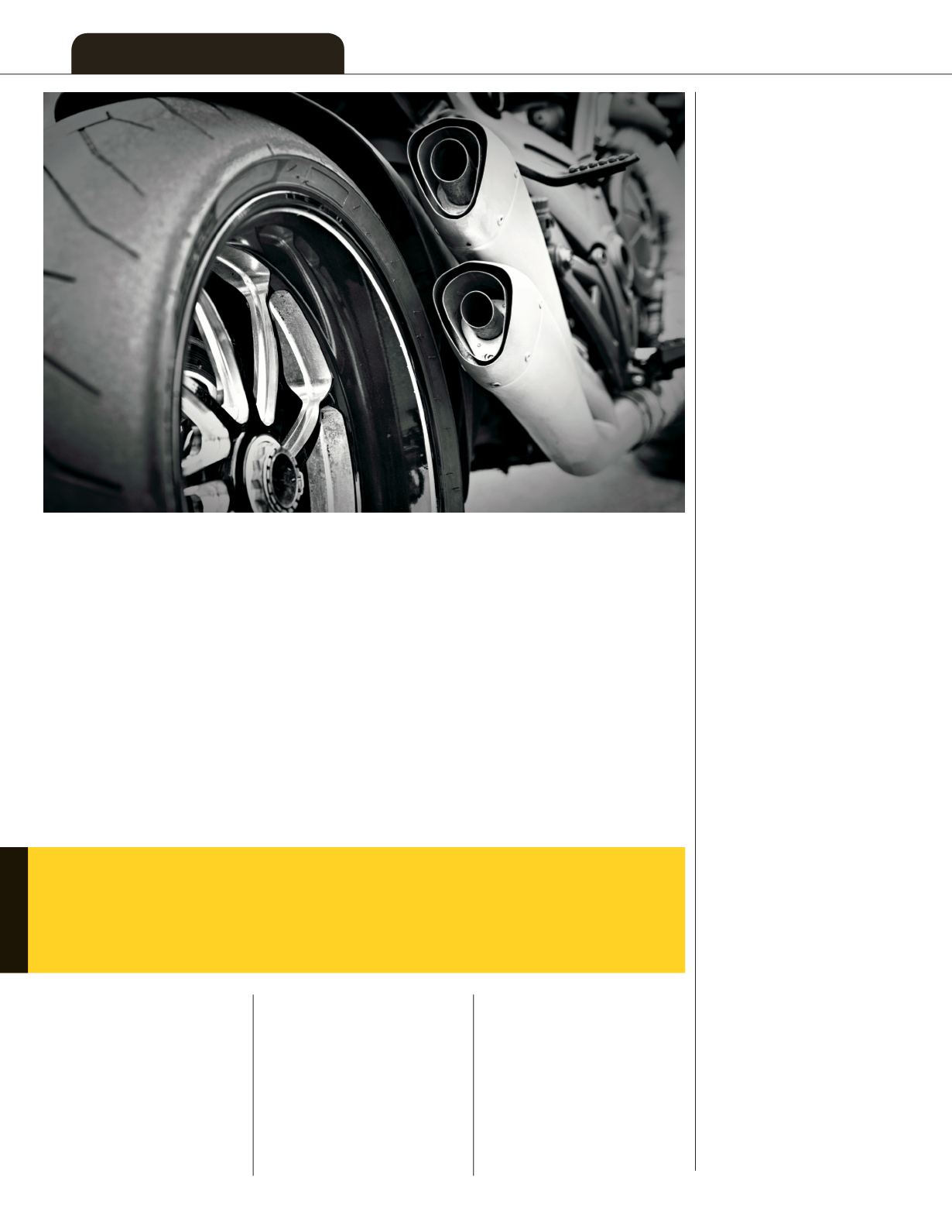
FUELS & LUBES INTERNATIONAL
Quarter Three 2014
6
Lube spec changes loom for
For makers of motorcycle lubricants, the future looks bright—and
challenging. On the plus side, there’s a growing two-wheeler market and,
hence, increasing demand for lubricants. However, existing specifications
are lacking in several critical areas. Thus, the industry is hammering out an
update with a 2016 target completion date.
By Hank Hogan
minute (rpm) while motorcycles
run from 6,000 to 16,000 rpm.
That greater power per cubic
centimeter of engine displacement
comes at a cost. Motorcycle
engines tend to be air-cooled,
which together with the power
output leads to high operating oil
temperatures. Oxidation drastically
increases with every 10
o
C rise in oil
temperature, and so hot operating
conditions work against the desire
to run longer distances between oil
changes.
“So here is one of the reasons
why we cannot go for very high
drain intervals,” Kumar said.
Currently drain intervals are in
the 3,000 to 6,000 kilometer (km)
range, which OEMs would like to
stretch further.
Another design constraint is a
small oil sump with a motorcycle
typically holding a liter of lubricant.
This relatively small amount means
that the vehicle can afford little oil
loss.
Another constraining factor
is that motorcycle lubricants have
a dual role: They are used in the
engine as well as in the transmission
and the clutch. Boosting fuel
economy while reducing emissions
at the same time becomes a more
complicated task. One way to boost
fuel economy is to use lower-
friction lubricants, but the clutch
needs higher friction to work well.
To reduce emissions,
motorcycles can use catalytic
converters like passenger cars,
but this would mean reducing
the phosphorus content in the
lubricants. For motorcycles, this is
currently specified to be between
0.08% and 0.12% by mass with
the lower limit set by the need to
reduce clutch wear. By comparison,
the API passenger car engine oil
specification for common viscosity
grades 0W-20, 5W-20 and 5W-30
calls for between 0.06% and 0.08%
phosphorus content.
Requirements for scooters, a
fast-growing two-wheeler market
segment, are a bit different.
Scooters are smaller and lighter
than motorcycles with an oil sump
capacity of only 800 milliliters (ml).
They also tend to have automatic
transmissions with a dry clutch that
does not share lubricants with other
vehicle parts. Scooters are a good
fit for urban areas and are more
au t omo t i v e co l umn
motorcycle
engine oils
Both the promise and
the challenge were highlighted by
Ajith Kumar, general manager of
research and development at TVS
Motor, the third largest two-wheeler
manufacturer in India.
Speaking at the International
Symposium on Fuels & Lubricants
(ISFL) in Faridabad, India in
April, Kumar noted the surging
motorcycle market in the Asia-
Pacific region. Projections are that
there will be 40 million units sold
annually within a few years, up six
million or so from 2012.
These motorcycle buyers have
some common requirements,
according to Kumar.
“The customers are very
sensitive about the cost of
ownership,” he said. “They
would like to have improved oil
consumption, fuel economy and
longer drain intervals.”
There are constraints in
achieving all of these because of
motorcycle design. Traditional
motorcycles differ from passenger
cars by having smaller engines that
put out more power per volume.
That can be seen in engine speeds
with passenger cars topping out
around 8,000 revolutions per


